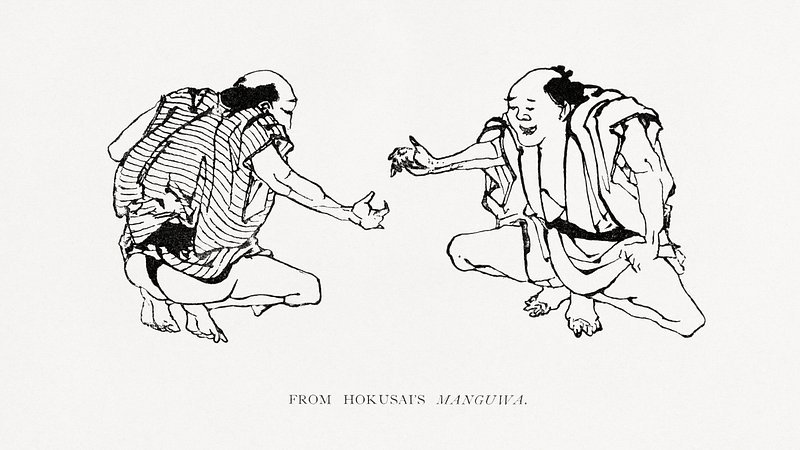
The Japanese Spider Crab is one of the most fascinating creatures of the ocean, capturing the imagination of those who hear about it. Just picture a crab with legs stretching out longer than a full-grown human is tall—that’s this remarkable species! Known for its impressive size, the Japanese Spider Crab can reach a leg span of up to 12 feet. This crab isn’t just about its size; it also showcases a unique beauty with its long, spindly legs and a hard shell adorned with a stunning array of colors. If you’re intrigued by marine life, you may find yourself captivated by the stories and facts surrounding this creature.
But why is it so interesting? For starters, the Japanese Spider Crab lives deep in the waters surrounding Japan, often lurking at depths of 150 meters or more. It thrives on a diet that ranges from mollusks and detritus to other smaller marine creatures, showcasing its adaptability in the deep ocean ecosystem. You might think of it as a gentle giant, as these crabs are generally not aggressive, despite their intimidating size. So, let’s dive deeper into the world of the Japanese Spider Crab, exploring its habitat, diet, life cycle, and more.
Habitat of the Japanese Spider Crab
The Japanese Spider Crab is primarily found in the waters around the Japanese archipelago, inhabiting the depths of the Pacific Ocean. Its preferred environment is interestingly diverse, ranging from rocky sea beds to sandy bottoms. Usually, these crabs can be spotted at depths of around 150 meters, but they sometimes venture deeper. This tendency to thrive in both shallow and deeper waters illustrates their adaptability and resilience.
These crabs are often spotted near underwater structures, such as rocks or artificial reefs, which provide them with shelter from predators. The ocean currents and temperature variations play a critical role in determining their movement and distribution. Warm waters are preferred, but they can manage in cooler temperatures, showcasing their hardy nature. Because of their deep-sea habitat, not much is known about their social behavior, but they appear to be solitary creatures outside of mating seasons.
Physical Characteristics
The Japanese Spider Crab is not just a title; this crab earns it through its remarkable physical features. With a body that can reach up to 16 inches in carapace width, the legs can stretch out to a whopping 12 feet! This leg span makes it the largest crab species in the world. Imagine standing next to a small car—that’s quite the sight! Their long legs are equipped with spiny protrusions, which act as both a defense mechanism and as a means of anchoring themselves to rocky surfaces.
Color-wise, these crabs sport a variety of shades, primarily shades of orange, brown, and yellow, which helps them blend into the sandy ocean floor. Their exoskeleton is also covered with small hairs, which can help them detect changes in their environment. It’s akin to how we use our skin to feel changes in temperature. This physical adaptation provides the Japanese Spider Crab an edge in sensing predators or prey lurking nearby.
Diet and Feeding Habits
You might wonder what a giant crab like the Japanese Spider Crab eats to sustain its impressive size. Well, their diet mainly consists of detritus, which includes decaying organic matter, alongside mollusks and smaller crustaceans. This makes them scavengers in their ecosystem, which is vital for maintaining the health of their environment. They help recycle nutrients through their feeding habits, showcasing yet another vital role in their habitat.
Interestingly, the feeding mechanism of these crabs is quite unique. They have strong pincers that allow them to crack open shells of snails and other hard-shelled creatures. When they come across their food, it’s not just a quick munch; they take their time to sort through and choose the most nutritious bits, similar to how we might peruse a menu to find the tastiest option. It’s a slow and deliberate process, reflective of their slow lifestyle.
Life Cycle and Reproduction
The life cycle of the Japanese Spider Crab is as intricate as the crab itself. After mating, which typically happens in the spring and summer months, females lay thousands of eggs—yes, thousands! These eggs are carried under their abdomen until they hatch, typically after a few months, depending on the water temperatures. This nurturing behavior is critical, as the tiny larvae are vulnerable and need protection to survive their early days.
Over the next few months, the larvae undergo a series of transformations, growing from vulnerable hatchlings to more mature crabs. As they grow, they take on the distinct features we associate with adult Japanese Spider Crabs, including their impressive leg span. Interestingly, they experience several molting phases throughout their lives, shedding their exoskeleton to allow for further growth. This molting is essential, as it gives them not just room to grow but also a chance to regenerate any lost limbs—a survival tactic that many crabs possess.
Conservation Status
As captivating as the Japanese Spider Crab is, it faces growing threats from human activities. Overfishing and habitat destruction are significant concerns, with their population declining in certain areas. Conservation efforts are underway, focusing on sustainable fishing practices and habitat protection to ensure these fascinating creatures remain part of our ocean ecosystems.
Local fisheries in Japan are beginning to recognize their importance not just as a delicacy but also as key players in marine biodiversity. By raising awareness about the Japanese Spider Crab and the challenges it faces, we can hopefully encourage better practices that allow this majestic crab to thrive for generations to come.
Interesting Facts
| Common Name: | Japanese Spider Crab |
| Scientific Name: | Maja brachydactyla |
| Leg Span: | Up to 12 feet (3.7 meters) |
| Habitat: | Pacific Ocean, mostly around Japan |
| Diet: | Detritus, mollusks, small crustaceans |
| Lifespan: | Up to 100 years |
| Color: | Orange, brown, yellow |
| Weight: | Up to 42 pounds (19 kg) |
FAQ
What is the biggest Japanese Spider Crab ever recorded?
The largest Japanese Spider Crab recorded had a leg span of about 18 feet, which is extraordinary! This size may vary as they continue to live in deeper parts of the ocean. Their impressive growth can be attributed to their long lifespan, which can reach up to 100 years. Given their lengthy life cycle, they have plenty of time to grow to remarkable sizes.
Are Japanese Spider Crabs dangerous?
Despite their intimidating appearance, Japanese Spider Crabs are generally not dangerous to humans. They are not aggressive and tend to shy away from interaction. Their long legs and sharp pincers might suggest a fearsome nature, but these crabs prefer to avoid confrontation. You could think of them more as gentle giants of the sea.
How do Japanese Spider Crabs communicate?
While not much is known about the specific communication methods of Japanese Spider Crabs, it is believed that they use body language and chemicals released into the water to interact with one another. Much like how we might use body language to convey emotions, these crabs rely on subtle signals to indicate mood or reproductive readiness.
How fast can Japanese Spider Crabs move?
On average, Japanese Spider Crabs are not known for their speed. They typically move slowly across the ocean floor, which fits their scavenger lifestyle. If you’re picturing a swift crab racing through the water, think again! Their leisurely pace is more about conserving energy as they search for food.
Can you eat Japanese Spider Crab?
Yes, the Japanese Spider Crab is often considered a delicacy in Japan. Their sweet, tender meat is enjoyed in various dishes, including sushi and boiled crab dishes. While many people find the flavor delightful, it’s important to consume them sustainably to ensure that their populations remain healthy.
What do baby Japanese Spider Crabs look like?
Baby Japanese Spider Crabs, or larvae, are quite different from their adult counterparts. They start off tiny and look nothing like the adults; instead, they resemble small zooplankton. As they grow and molt, they gradually gain the features that define their species, leading to their distinctive long legs and larger bodies.
Are Japanese Spider Crabs social animals?
Japanese Spider Crabs are primarily solitary creatures, usually coming together only for mating purposes. Outside of the breeding season, they tend to keep to themselves, which helps them avoid competition for resources. You might compare their social behavior to that of some land animals, where individuals prefer solitude over group living.
Where can I see Japanese Spider Crabs in aquariums?
Many aquariums around the world, particularly in Japan, feature Japanese Spider Crabs in their exhibits. Notable locations include the Okinawa Churaumi Aquarium and the Asahiyama Zoo. Visiting these places allows you to see these magnificent creatures up close while learning more about their biology and conservation.
How are Japanese Spider Crabs used in traditional medicine?
In some cultures, various parts of the Japanese Spider Crab have been utilized in traditional medicine. The meat and shell may be used in remedies, believed to have health benefits. However, scientific evidence supporting these claims is limited, and one should approach such practices with caution, always prioritizing well-researched methods of treatment.
What is the conservation status of Japanese Spider Crabs?
Currently, the Japanese Spider Crab is not listed as endangered but faces threats from habitat loss and overfishing. Conservation efforts are in the works, focusing on sustainable practices to ensure their populations remain stable. It’s essential to support initiatives that promote the health of ocean ecosystems where these crabs reside, maintaining their role in marine biodiversity.
How long do Japanese Spider Crabs live?
Japanese Spider Crabs can live up to 100 years, making them one of the longest-living crab species. This long lifespan allows them to grow significantly over time, achieving impressive size and dimensions as they age. When you think of these crabs, consider not just their physical size but also their longevity in the ocean!

